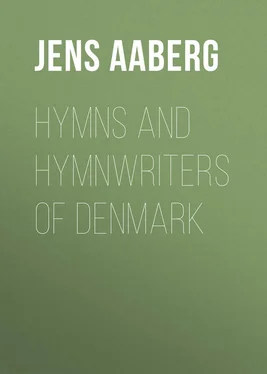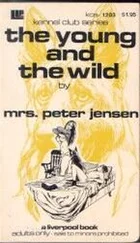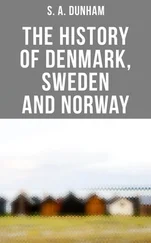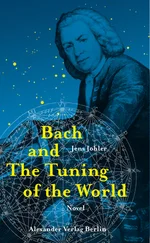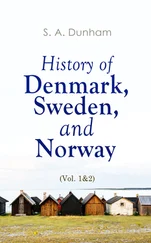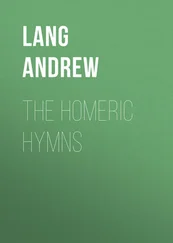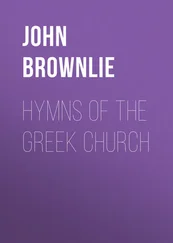Jens Aaberg - Hymns and Hymnwriters of Denmark
Здесь есть возможность читать онлайн «Jens Aaberg - Hymns and Hymnwriters of Denmark» — ознакомительный отрывок электронной книги совершенно бесплатно, а после прочтения отрывка купить полную версию. В некоторых случаях можно слушать аудио, скачать через торрент в формате fb2 и присутствует краткое содержание. Жанр: foreign_antique, foreign_prose, Историческая проза, на английском языке. Описание произведения, (предисловие) а так же отзывы посетителей доступны на портале библиотеки ЛибКат.
- Название:Hymns and Hymnwriters of Denmark
- Автор:
- Жанр:
- Год:неизвестен
- ISBN:нет данных
- Рейтинг книги:3 / 5. Голосов: 1
-
Избранное:Добавить в избранное
- Отзывы:
-
Ваша оценка:
- 60
- 1
- 2
- 3
- 4
- 5
Hymns and Hymnwriters of Denmark: краткое содержание, описание и аннотация
Предлагаем к чтению аннотацию, описание, краткое содержание или предисловие (зависит от того, что написал сам автор книги «Hymns and Hymnwriters of Denmark»). Если вы не нашли необходимую информацию о книге — напишите в комментариях, мы постараемся отыскать её.
Hymns and Hymnwriters of Denmark — читать онлайн ознакомительный отрывок
Ниже представлен текст книги, разбитый по страницам. Система сохранения места последней прочитанной страницы, позволяет с удобством читать онлайн бесплатно книгу «Hymns and Hymnwriters of Denmark», без необходимости каждый раз заново искать на чём Вы остановились. Поставьте закладку, и сможете в любой момент перейти на страницу, на которой закончили чтение.
Интервал:
Закладка:
C. Aaberg
Hymns and Hymnwriters of Denmark
Foreword
This book deals with a subject which is new to most English readers. For though Danish hymnody long ago became favorably known in Northern Europe, no adequate presentation of the subject has appeared in English. Newer American Lutheran hymnals contain a number of Danish hymns, some of which have gained considerable popularity, but the subject as a whole has not been presented.
A hymn is a child both of its author and of the time in which he lived. A proper knowledge of the writer and the age that gave it birth will enhance our understanding both of the hymn and of the spiritual movement it represents. No other branches of literature furnish a more illuminating index to the inner life of Christendom than the great lyrics of the Church. Henry Ward Beecher said truly: “He who knows the way that hymns flowed, knows where the blood of true piety ran, and can trace its veins and arteries to its very heart.”
Aside from whatever value they may have in themselves, the hymns presented on the following pages therefore should convey an impression of the main currents within the Danish church, and the men that helped to create them.
The names of Kingo, Brorson and Grundtvig are known to many, but so far no biographies of these men except of the sketchiest kind have appeared in English. It is hoped that the fairly comprehensive presentation of their life and work in the following pages may fill a timely need.
In selecting the hymns care has been taken to choose those that are most characteristic of their authors, their times and the movements out of which they were born. While the translator has sought to produce faithfully the metre, poetry and sentiment of the originals, he has attempted no slavishly literal reproduction. Many of the finest Danish hymns are frankly lyrical, a fact which greatly increases the difficulty of translation. But while the writer is conscious that his translations at times fail to reproduce the full beauty of the originals, he still hopes that they may convey a fair impression of these and constitute a not unworthy contribution to American hymnody.
An examination of any standard American church hymnal will prove that American church song has been greatly enriched by transplantations of hymns from many lands and languages. If the following contribution from a heretofore meagerly represented branch of hymnody adds even a little to that enrichment, the writer will feel amply rewarded for the many hours of concentrated labor he has spent upon it.
Most of the translations are by the writer himself. When translations by others have been used, credit has been given to them except where only parts of a hymn have been presented.
Minneapolis, Minnesota, September 21st, 1944.
Chapter One
Early Danish Hymnody
Danish hymnody, like that of other Protestant countries, is largely a child of the Reformation. The Northern peoples were from ancient times lovers of song. Much of their early history is preserved in poetry, and no one was more honored among them than the skjald who most skillfully presented their thoughts and deeds in song. Nor was this love of poetry lost with the transition from paganism to Christianity. The splendid folk songs of the Middle Ages prove conclusively that both the love of poetry and the skill in writing it survived into the new age. One can only wonder what fine songs the stirring advent of Christianity might have produced among a people so naturally gifted in poetry if the church had encouraged rather than discouraged this native gift.
But the Church of Rome evinced little interest in the ancient ways of the people among whom she took root. Her priests received their training in a foreign tongue; her services were conducted in Latin; and the native language and literature were neglected. Except for a few lawbooks, the seven hundred years of Catholic supremacy in Denmark did not produce a single book in the Danish language. The ordinances of the church, furthermore, expressly forbade congregational singing at the church services, holding that, since it was unlawful for the laity to preach, it was also impermissible for them to sing in the sanctuary. It is thus likely that a Danish hymn had never been sung, except on a few special occasions in a Danish church before the triumph of the Reformation.
It is not likely, however, that this prohibition of hymn singing could be effectively extended to the homes or occasional private gatherings. Hans Thomisson, who compiled the most important of the early Danish hymnals, thus includes five “old hymns” in his collection with the explanation that he had done so to show “that even during the recent times of error there were pious Christians who, by the grace of God, preserved the true Gospel. And though these songs were not sung in the churches – which were filled with songs in Latin that the people did not understand – they were sung in the homes and before the doors”.
Most of these earlier hymns no doubt were songs to the Virgin Mary or legendary hymns, two types of songs which were then very common and popular throughout the church. Of the few real hymns in use, some were composed with alternating lines of Danish and Latin, indicating that they may have been sung responsively. Among these hymns we find the oldest known Danish Christmas hymn, which, in the beautiful recast of Grundtvig, is still one of the most favored Christmas songs in Danish.
Christmas with gladness sounds,
Joy abounds
When praising God, our Father,
We gather.
We were in bondage lying,
But He hath heard our prayer.
Our inmost need supplying,
He sent the Savior here.
Therefore with praises ringing,
Our hearts for joy are singing:
All Glory, praise and might
Be God’s for Christmas night.
Right in a golden year,
Came He here.
Throughout a world confounded
Resounded
The tidings fraught with gladness
For every tribe of man
That He hath borne our sadness
And brought us joy again,
That He in death descended,
Like sun when day is ended,
And rose on Easter morn
With life and joy reborn.
He hath for every grief
Brought relief.
Each grateful heart His praises
Now raises.
With angels at the manger,
We sing the Savior’s birth,
Who wrought release from danger
And peace to man on earth,
Who satisfies our yearning,
And grief to joy is turning
Till we with Him arise
And dwell in Paradise.
The earliest Danish texts were translations from the Latin. Of these the fine translations of the well known hymns, “Stabat Mater Dolorosa”, and “Dies Est Laetitia in Ortu Regali”, are still used, the latter especially in Grundtvig’s beautiful recast “Joy is the Guest of Earth Today”.
At a somewhat later period, but still well in advance of the Reformation, the first original Danish hymns must have appeared. Foremost among these, we may mention the splendid hymns, “I Will Now Hymn His Praises Who All My Sin Hath Borne”, “On Mary, Virgin Undefiled, Did God Bestow His Favor”, and the beautiful advent hymn, “O Bride of Christ, Rejoice”, all hymns that breathe a truly Evangelical spirit and testify to a remarkable skill in the use of a language then so sorely neglected.
Best known of all Pre-Reformation songs in Danish is “The Old Christian Day Song” – the name under which it was printed by Hans Thomisson. Of the three manuscript copies of this song, which are preserved in the library of Upsala, Sweden, the oldest is commonly dated at “not later than 1450”. The song itself, however, is thought to be much older, dating probably from the latter part of the 14th century. Its place of origin is uncertain, with both Sweden and Denmark contending for the honor. The fact that the text printed by Hans Thomisson is identical, except for minor variations in dialect, with that of the oldest Swedish manuscript proves, at least, that the same version was also current in Danish, and that no conclusion as to its origin can now be drawn from the chance preservation of its text in Sweden. The following translation is based on Grundtvig’s splendid revision of the song for the thousand years’ festival of the Danish church. [1] fn_1 Other translations: “O day full of grace, which we behold” by C. Doving in “Hymnal for Church and Home.” “The dawn from on high is on our shore” by S. D. Rodholm in “World of Song”.
Интервал:
Закладка:
Похожие книги на «Hymns and Hymnwriters of Denmark»
Представляем Вашему вниманию похожие книги на «Hymns and Hymnwriters of Denmark» списком для выбора. Мы отобрали схожую по названию и смыслу литературу в надежде предоставить читателям больше вариантов отыскать новые, интересные, ещё непрочитанные произведения.
Обсуждение, отзывы о книге «Hymns and Hymnwriters of Denmark» и просто собственные мнения читателей. Оставьте ваши комментарии, напишите, что Вы думаете о произведении, его смысле или главных героях. Укажите что конкретно понравилось, а что нет, и почему Вы так считаете.
